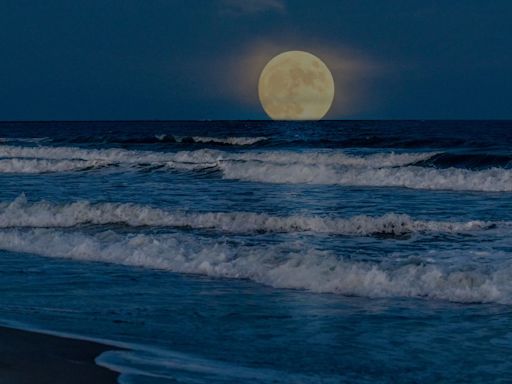Search results
A lunar eclipse is an astronomical event that occurs when the Moon moves into the Earth's shadow, causing the Moon to be darkened. [1] . Such an alignment occurs during an eclipse season, approximately every six months, during the full moon phase, when the Moon's orbital plane is closest to the plane of the Earth's orbit .
Sep 7, 2016 · Which upcoming lunar and solar eclipses are visible in Singapore, Singapore, and what do they look like?
Jan 2, 2024 · Lunar eclipses occur when Earth positions itself between the sun and the moon and casts a shadow across the surface of the moon. They can only occur during a full moon...
A concise summary of all lunar eclipses from 2021 through 2030 is presented in the table below. The first column gives the Calendar Date of the instant of greatest eclipse [ 1 ]. The second column TD of Greatest Eclipse is the Terrestrial Dynamical Time of greatest eclipse.
Solar and lunar eclipses worldwide (1900 to 2199) with animations and maps of the eclipse path. Find eclipses in your location.
May 2, 2022 · What is a lunar eclipse? A lunar eclipse occurs when the Sun, Earth, and Moon align so that the Moon passes into Earth’s shadow. In a total lunar eclipse, the entire Moon falls within the darkest part of Earth’s shadow, called the umbra.
A total lunar eclipse takes place when the Earth comes between the Sun and the Full Moon and blocks the Sun's direct rays from lighting up the Moon. It is sometimes called a Blood Moon as the eclipsed Moon may look red.
Lunar eclipses occur at the full moon phase. When Earth is positioned precisely between the Moon and Sun, Earth’s shadow falls upon the surface of the Moon, dimming it and sometimes turning the lunar surface a striking red over the course of a few hours. Each lunar eclipse is visible from half of Earth.
Oct 13, 2022 · A lunar eclipse occurs when the Sun, Earth, and Moon align so that the Moon passes into Earth’s shadow. In a total lunar eclipse, the entire Moon falls within the darkest part of Earth’s shadow, called the umbra. When the Moon is within the umbra, it will turn a reddish hue.
The table below lists every lunar eclipse from 2011 through 2020. Durations are given for both partial and total (in bold) phases. Click on the eclipse Calendar Date to see a map and diagram of an eclipse. Click on the Region of Eclipse Visibility to see a detailed description of an eclipse.

